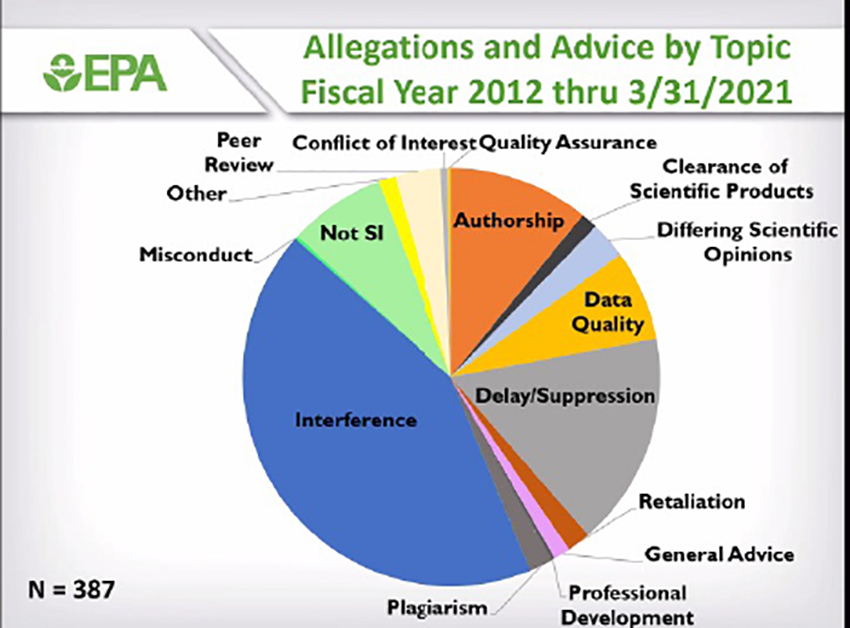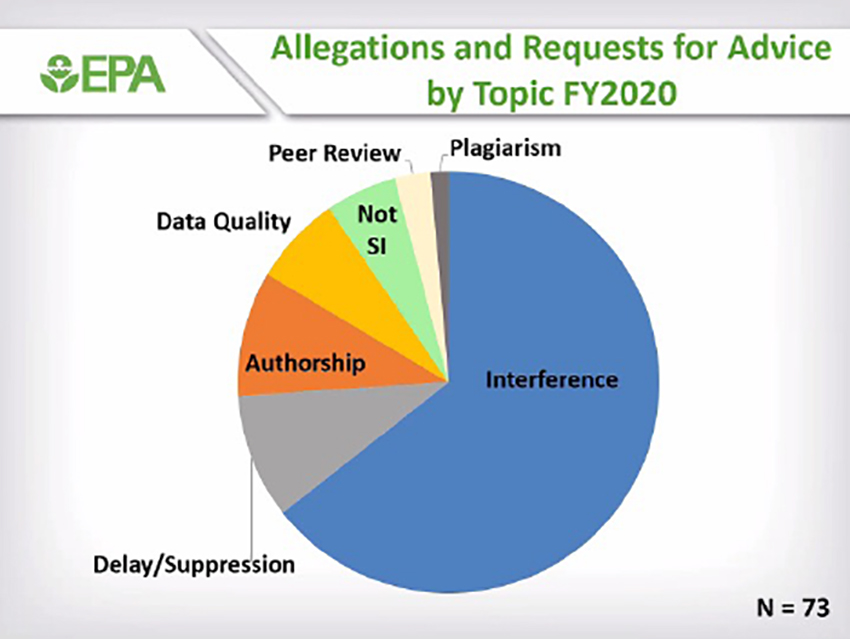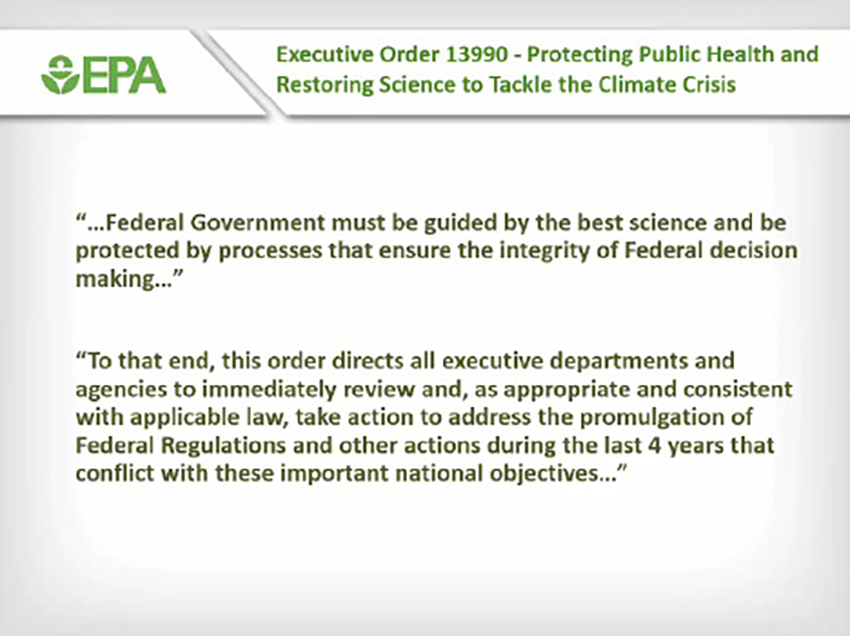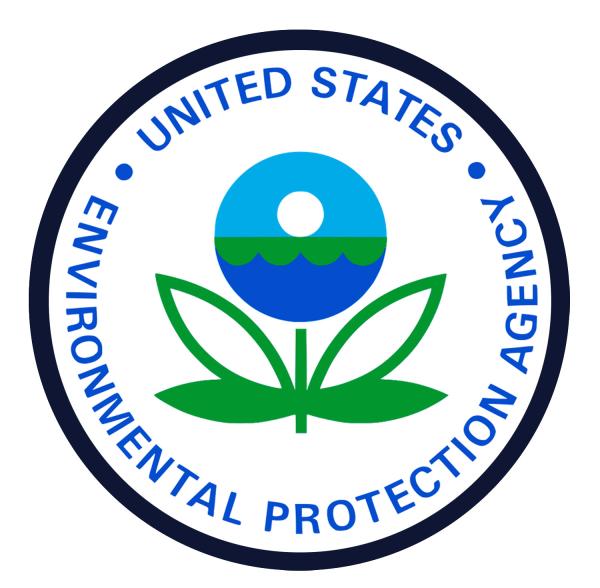Here is a breakdown of the concerns brought to the EPA’s internal integrity unit over the last decade. Some are purely internal concerns, like professional development, authorship acknowledgments, or intra-agency retaliation. With respect to transparency in science, the issues of concern involve interference, delay or suppression, peer review, data quality, and differing scientific opinions. Conflicts of interest do crop up, but seem to be a tiny fraction overall.

Here is the report for just 2020. Interference, delay, and suppression reflect the majority, just as they did throughout the decade.

Interference or manipulation was further explained as “reducing the science available for decision making, without scientific justification,” by:
- Narrowing scope
- Adjusting end dates in a systematic review
- Removing studies or endpoints
- Rejecting models or new methods
- Refusing to allow the request for additional or improved information from regulated entities
- Downplaying or exaggerating uncertainty
It was clear that the EPA’s integrity staff wanted “politics” out of the process. They noted other allegations that seemed more timely. For example, managers altering “technical documents without knowledge or input of project scientists” or requiring them to adjust their analysis or conclusions “to make them less protective of human health without scientific justification.” They pointed out that flawed review might be due to “selection of reviewers to influence outcomes … Changes in Scientific Federal Advisory Committees to render them less independent and narrow their expertise.”
I think we can all agree that these are significant concerns and considerations. But then we come to Executive Order 13990, which was signed by President Biden earlier this year.

Why look back over just the last four years? The concerns of EPA’s scientists may have increased of late, but they go back, as the EPA demonstrated, at least a decade. When the Trump administration proposed its scientific transparency rules to possibly “look back” at the seemingly settled science of two decades ago, it was greeted as another attack on scientific objectivity. Those same voices now champion the new executive order.
While I believe the previous administration was more heavy-handed and clumsy in its attempted meddling than most, politicized science goes back much further. Are we already in danger of committing the same politicization when we only look back over the last administration?




